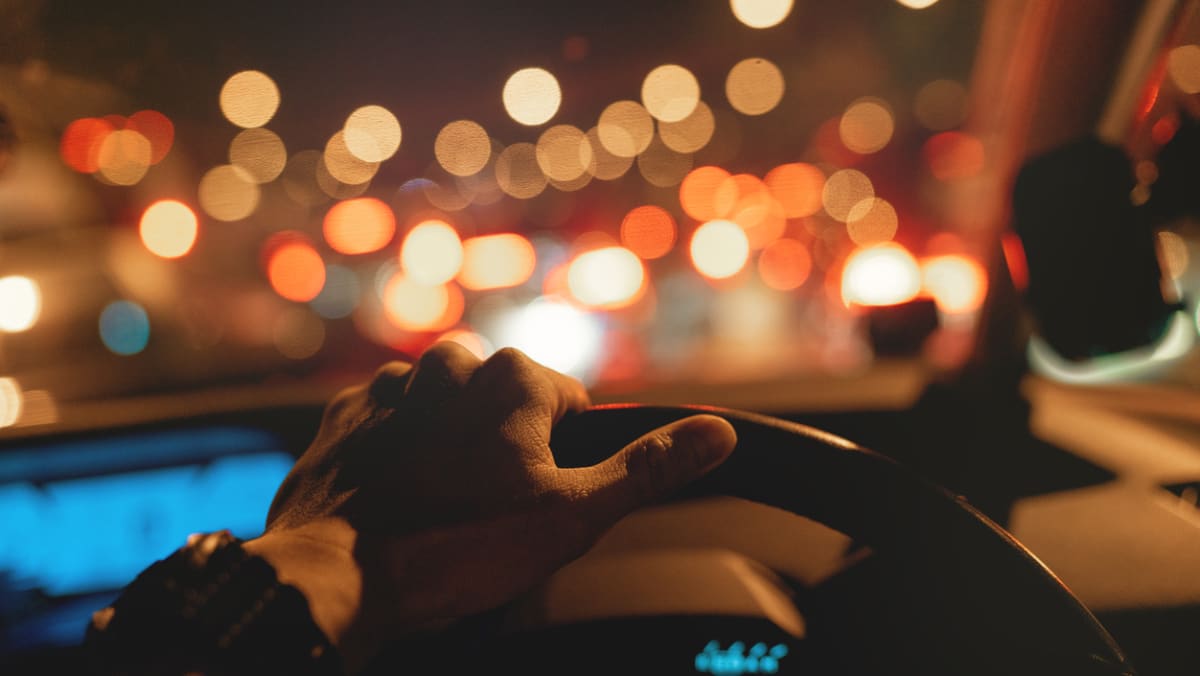
He continued driving against traffic for about 12km along the PIE towards East Coast Parkway (ECP), knowing that he was driving against traffic.
After entering ECP, he made a U-turn along Airport Boulevard and joined the normal flow of traffic before heading home to Marine Crescent.
Surveillance cameras that captured Aswani’s journey along PIE showed him driving past more than 40 vehicles, including cars, motorcycles, vans and lorries.
He often drove in the fastest lane and veered between lanes, with other road users forced to take evasive action by veering away from him, filtering lanes or braking to avoid a collision.
A total of 28 video clips depicting the journey were sent to the Health Sciences Authority for speed analysis, and Aswani was found to have driven at average speeds of between 41kmh and 91kmh at various times along the PIE.
A member of the public called the police on the day of the incident, saying they had seen a car driving against the flow of traffic.
Aswani was arrested at his workplace the next afternoon, with breath tests showing readings below the stipulated breath alcohol limit.
“SERIOUS POTENTIAL HARM”
The prosecution had sought four to eight weeks’ jail and a three to four years’ driving ban for Aswani, pointing to the serious potential harm.
They argued that Aswani had decided to drive despite drinking alcohol. By the time he was arrested, his breath alcohol level had almost returned to normal and there was no drink driving charge, but the prosecution said the sentence imposed should reflect “disapprobation of the accused’s selfish and irresponsible decision to drink and drive”.
Even after realising that he was driving against the flow of traffic, Aswani did not pull over or call for help but continued driving home, taking no steps to mitigate risk for others such as slowing down, said the prosecution.
The absence of injury was “merely fortuitous and should be credited to the ability of other road users to take evasive action in time”, the prosecution said.
Aswani’s lawyers said their client was not intoxicated when he was driving. They said he had no prior convictions or traffic violations, and that he had gone the wrong way because he was unfamiliar with roads in Singapore.
Mr Koh Weijin Leon and Mr Chng He Han argued that Aswani had “panicked when he realised that he was going the opposite direction”.
This confusion was exacerbated by his eye condition, keratoconus. He underwent surgery for his condition but still suffers slight impairment, even though he had been told it would not impact his ability to drive.
As a result of his eye condition and low lighting at night, he struggled to find his way out of the expressway, claimed the lawyers.
They said that while it was true that Aswani’s vehicle could be seen on the first lane of the road, the fast lane, he would have been in the slowest lane if he had been driving the right way.
They claimed that he chose to stay in that lane because he believed that vehicles in that lane would travel at a slower speed.
In response, the prosecution said his eye condition and the fact that Aswani did not drive often “should have made him mindful of his incompetence” and he should not have driven.
The judge agreed with the prosecution that the risk of harm was “exceptionally high” in this case, and that Aswani had driven for a “very substantial distance”.
He drove in a particularly dangerous manner for almost an hour, she said.
The judge said she was “unable to accept or comprehend” the defence’s contention that if the accused had been driving the right way, he would have been in the slowest lane.
“It was not a mitigating factor or justification that he had chosen to stay in that lane because he believed that the vehicles in that lane would travel at a slower speed, reducing the risk of danger,” said District Judge Salina Ishak.
“The fact remains that he had driven in the rightmost lane where other motor vehicles travelling in the right direction would be at a speed higher than the average speed on a normal road,” she said.
Aswani intends to appeal against his sentence and is out on bail pending appeal.

